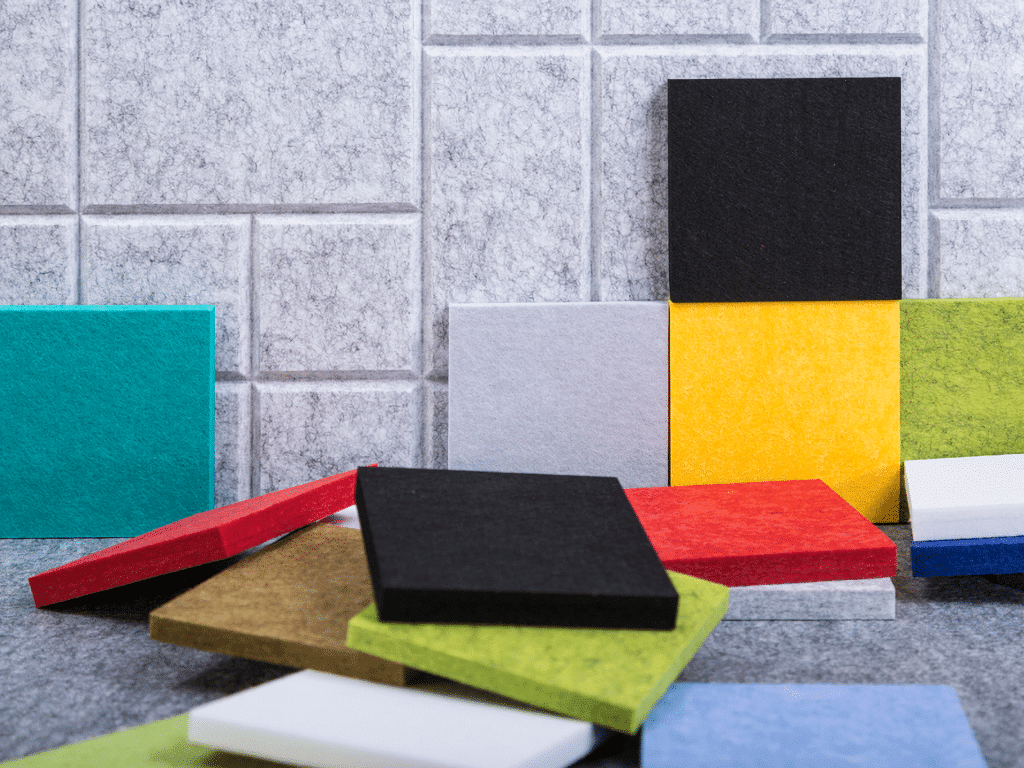Acousticians have a wide range of materials at their disposal to create an optimal acoustic environment. They select materials based on their properties in certain frequency ranges, as well as their ability to provide sound insulation and improve sound quality. Depending on the frequency, materials such as wood, rock wool, glass wool, gypsum board (also known as drywall), and acoustic foam are used to create a perfect acoustic environment. These materials are carefully configured to ensure ideal sound performance in the frequency range of 20Hz to 20kHz.
Thanks to their knowledge of sound waves and their properties, acousticians can use their materials to create a perfect space for any application, whether it’s a recording studio, a concert hall, or a residential home.
1. acousticians have access to a variety of materials to help create a soundproof environment
Acousticians are responsible for creating a soundproof environment and have a range of materials at their disposal for this purpose. Depending on the frequency range, different materials can be used, such as wood, rock wool, glass wool, gypsum board (also known as drywall), and acoustic foam. These materials are carefully configured to ensure ideal sound performance in each frequency range, including frequencies ranging from 20Hz to 20kHz. It is important for acousticians to understand the acoustic properties of each material in order to create the most effective sound insulation in any acoustic environment.
2. Different materials are used for different frequency ranges, such as wood for 20Hz to 100Hz and rock wool for 100Hz to 250Hz
Acousticians have a variety of materials at their disposal to insulate and create a perfect acoustic environment. Depending on the frequency range, different materials are used. For frequency ranges between 20Hz and 100Hz, wood is the material of choice due to its sound absorption qualities. For frequency ranges between 100Hz and 250Hz, rock wool is used for its superior sound absorption and insulation qualities. Other materials, such as glass wool, gypsum board (BA13), and acoustic foam, are used for frequency ranges between 250Hz and 20kHz. Careful configuration and selection of the right materials allow for ideal sound performance in any frequency range.
3. Glass wool, gypsum board (BA13), and Styrofoam can also be used in the frequency ranges of 250Hz to 10kHz
Acousticians have a range of materials at their disposal to insulate and create a perfect acoustic environment. Depending on the frequency, materials such as wood, rock wool, glass wool, gypsum board (BA13), and bituminous stick-ons can be used to ensure ideal sound performance in frequency ranges from 250Hz to 10kHz. These materials are carefully configured to minimize sound waves that do not require insulation and maximize sound waves that do require insulation. This technique allows for a true acoustic experience without distortion or interference.
4. For the highest frequency range, 10kHz to 20kHz, specific materials are used to ensure ideal sound
For the highest frequency range, from 10kHz to 20kHz, specific materials are chosen to ensure optimal sound performance. These materials are designed to absorb sound waves and vibrations and must be carefully configured to achieve the desired result. In this frequency range, acousticians often use materials such as wood, rock wool, glass wool, gypsum board (BA13), and acoustic foam. When combined, these materials create an ideal acoustic environment that can withstand the highest frequencies.
5. Careful configuration of materials is essential to create a soundproof space
To create a soundproof space, it is essential to carefully configure the materials used. Acousticians have a range of materials at their disposal to isolate and create a perfect acoustic environment. Depending on the frequency, materials such as wood, rock wool, glass wool, gypsum board (BA13), and Styrofoam are used and carefully configured to ensure ideal sound in the frequency range of 20Hz to 20kHz. Precise measurements and calculations are carried out to ensure maximum acoustic isolation and optimal sound quality.
6. Experienced acousticians are able to select the materials that are best suited for the given frequency range
Experienced acousticians are knowledgeable about material selection, as different materials are better suited for different frequency ranges. For example, materials such as wood, rock wool, glass wool, gypsum board (BA13), and Styrofoam are generally used for frequencies ranging from 20 Hz to 20 kHz, respectively. Acousticians are able to select the most appropriate materials for the given frequency range in order to create a perfect acoustic environment.
7. Acoustic insulation can help reduce unwanted noise and improve sound quality
Acoustic insulation is one of the most important elements in creating a perfect acoustic environment. By reducing unwanted noise and improving sound quality, acousticians are able to use a range of materials such as wood, rock wool, glass wool, gypsum board (BA13), and Styrofoam to create insulation tailored to a specific frequency range. This optimizes sound in the following frequency ranges: 20Hz to 20kHz. This creates the best possible environment for speech and music.
8. To create perfect acoustics
Acousticians have at their disposal a wide range of materials that can be used to isolate and create a perfect acoustic environment. Depending on the frequency, materials such as wood, rock wool, glass wool, gypsum board (BA13), and bituminous sticksons will be configured and carefully arranged to ensure optimal acoustic performance in the frequency ranges of 20Hz to 20kHz. Additionally, materials can be tailored to the specific needs of the room, such as size, shape, acoustic absorption, diffusion, and reverberation. Once the materials are in place, the acoustician can fine-tune the parameters to achieve perfect acoustics.
In conclusion, acousticians have a variety of materials at their disposal to create a perfect acoustic environment. By carefully selecting the right materials and configuring them correctly, they can ensure that sound is optimized for each frequency range. By using high-quality materials, acousticians can ensure that the sound produced meets their standards for quality and clarity. With the right combination of materials, acousticians can create a space that is both comfortable and acoustically healthy.

